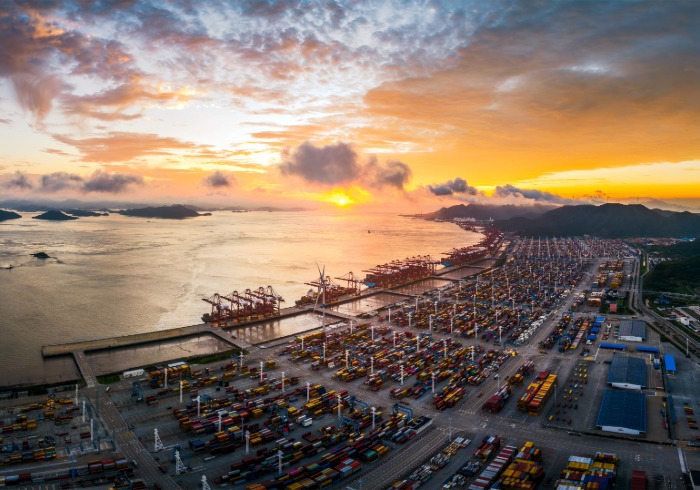With the export credit agency unable to approve large transactions, corporates are getting creative when looking for export support. Melodie Michel reports.
For three years now, the annual US Exim conference in Washington DC has revolved around one central topic: the export credit agency (ECA)’s inability to support transactions of over US$10mn. According to recent figures, US Exim has a backlog of almost US$42bn-worth of deals waiting to be approved – US$21bn in the power sector, US$14bn in oil and gas, US$3.6bn in transportation including aircraft, US$2bn in infrastructure projects and US$1.3bn in technology, including satellites.
But the senate’s inaction in confirming at least three out of five board members – the famous “quorum” needed for full governance – has frozen the ECA’s approval power. At the end of April 2018, President Donald Trump named Jeffrey Gerrish, already deputy US trade representative for Asia, Europe, the Middle East, and industrial competitiveness, as acting president and chairman of the board of directors of US Exim. The four people he nominated in 2017 to make up the full board were approved by the senate banking committee in December, but they are still pending confirmation by the full senate, and there is no date scheduled for the vote.
While they continue to pressure government to restore US Exim’s full lending powers, American companies, particularly large corporations and midcaps, have had to look for other solutions – with very mixed results.
The aviation exception
US Exim opponents consider the bank to be a “corporate welfare” tool, and argue that the support it provides should be offered by the commercial market. And while ECAs around the world are still extremely dominant in the aviation finance business, recent moves in the US show that there may be more scope for commercial involvement.
Shortly after US Exim was partially disabled, Boeing and Marsh joined forces to come up with an insurance solution for airlines needing to finance aircraft purchases. The result of this collaboration, the Aircraft Finance Insurance Consortium (AFIC), was formally launched in June 2017. In the six months to year-end, the consortium successfully closed the financing of 16 Boeing aircraft, aggregating about US$1.5bn across four different airlines and one leasing company. To date in 2018, AFIC has been mandated on 17 aircraft financings, and is bidding for another 50 financings.
“We’re a year or two ahead of where we thought we were going to be in terms of market acceptance,” Robert Morin, AFIC’s transaction and business development leader – and US Exim veteran – tells GTR.
The product has worked so well that Morin has been approached by other aircraft manufacturers (including those who do have the support of an ECA) looking to diversify their pool of financing. And although for now, AFIC works exclusively with Boeing clients – mainly out of loyalty to its co-creator – the possibility of expanding the customer base in the medium term is real.
Part of AFIC’s success is due to its flexibility: of the 16 deals signed last year, 13 were funded in US dollars, three in euros, some were at a fixed interest rate and others at a floating interest rate. AFIC’s mandates to date include combining AFIC-supported financing into French and Italian lease structures.
In addition, AFIC has also offered to combine AFIC-supported financing with a Japanese Operating Lease with Call Option (JOLCO), a structure where Japanese investors own the aircraft for a typical term of 12 years, after which the airline has the right to buy it. The consortium works with four insurers (Allianz, Axis, Sompo and Fidelis), and its financiers include about 20 commercial banks and a handful of institutional investors, which arrange private placements on the deals.
Another factor is the OECD’s 2011 Aircraft Sector Understanding, an agreement that made it more expensive for ECAs to finance purchases for the most creditworthy airlines through raised exposure fees. As a result, today ECA finance is not necessarily the cheapest funding options for airlines. In fact, last year, AFIC found itself competing against Sace-backed financing in an aviation deal, and won – although Morin cannot reveal the name of the client airline.
The positive response to this private market instrument also has a lot to do with unusually buoyant conditions in the aviation sector. Morin explains: “Aircraft finance at the moment is going through an unprecedented period of liquidity and competition. It’s not just the number of players but the types of product: almost every month you see another [leasing] platform being announced.”
Recent announcements include ICBC Leasing’s establishment in China in late 2017 and DAE Aerospace’s acquisition of Dublin-based AWAS, making it a top 10 aircraft lessor.
While Boeing Capital president Tim Myers agrees with the overall assessment, he does worry about the future. “Today markets are much healthier, even airlines are profitable. However when these conditions change, Boeing will be at a severe disadvantage,” he tells GTR.
In the aircraft financing sector, the need for ECAs is linked to the cyclicality of the underlying market. At the height of the 2008/09 global financial crisis, when private players lost their appetite to fund the market, it was US Exim that stepped in, supporting over a third of Boeing deliveries. And there is no doubt that the current hyper-competitiveness of the sector won’t last forever.
“[This cyclicality] means there will always be a need for US Exim and the other aviation ECAs. At its peak you have seen 30% to 35% of aircraft financed with ECA support globally. In periods like now with a lot of liquidity, you would expect ECA support to be considerably lower, at 5% to 10%. This is a typical dynamic in cyclical markets,” says John Meakin, JP Morgan’s managing director, global head of aviation export finance, adding that US Exim “will certainly be needed if, or when, the current commercial sources of liquidity scale back”.
It’s also worth noting that, as luck would have it, Boeing’s main competitor, Airbus, found itself unable to receive ECA support around the same time as US Exim support froze, due to a number of investigations into alleged compliance issues. This has levelled the playing field over the past few years, but now the French company has reached an agreement with European ECAs to resume its applications for export credit – likely creating more pressure for Boeing.
Other ECAs step up to the plate
In a landmark transaction (and GTR Best Deal award winner) last year, SunExpress, a joint venture between Turkish Airlines and Lufthansa, received the first-ever Sace-guaranteed financing for Boeing aircraft, a line worth up to US$100mn for the purchase of three new Boeing 737-800 planes. This won’t be the last deal backed by the Italian ECA for Boeing clients: the two signed an agreement last year through which Sace will consider guaranteeing credit lines from third parties for the sale of Boeing aircraft up to a pre-determined amount every year.
This is a great example of how large manufacturers like Boeing, but also GE and others, can leverage their global supply chains to receive export support from other countries. “When US Exim became unavailable to us we looked at our other partners, other manufacturers in our supply chain, and we said to these ECAs: ‘Can you support financing for the commercial aircraft products that your suppliers in country build parts for?’ and they said: ‘absolutely’,” explains Myers, adding that Boeing is working with various ECAs, including Sace and UK Export Finance (UKEF), on further transactions for 2018.
In fact, earlier this year, UKEF provided credit for the export of two 787-9 aircraft to Norwegian Air Shuttle on the basis that they feature Rolls-Royce engines manufactured in the UK, meeting the ECA’s 20% local content requirement.
Sace has been particularly active in leveraging the opportunity of the US Exim freeze to help Italian exporters gain market share. In addition to significant agreements signed with both Boeing and GE, it seemingly plans to continue to grow its collaboration with American corporates.
In an email statement, a Sace representative tells GTR: “Sace’s reach on international players/buyers is likely to grow further. The new business plan launched the Push Strategy, a programme through which a selected number of potential foreign buyers will be offered credit lines at competitive rates for the purchase of Italian goods and services. By 2020, €4.5bn will have been allocated for this initiative, the first of an increasingly proactive approach introduced by Sace to support the penetration and competitiveness of Italian companies in high-potential markets and sectors.”
Large US companies from many sectors are considering the foreign ECA alternative, and were willing to make changes to their supply chains if need be. Bill Killeen, CEO of bridge construction firm Acrow Bridge, explained how crucial ECA support was for his company’s public sector customers at the annual US Exim conference in April this year.
“They don’t necessarily have the avenues to putting the structured financing together that others have to be able to do a large bridge development project. An ECA is vitally important to us. So in the meantime, yes, of course we’re starting to look around to see whether Export Development Canada [EDC, Canadian ECA], can help us. We’re also talking to Sace in Italy. If we needed to add value to our products somehow in those countries we would,” he said.
While the capacity offered by foreign peers is not enough to replace the support US Exim used to provide, the ECA could face harsher competition if and when it starts working normally again: in all the time it is spending lobbying government, others are innovating and coming up with creative solutions to support companies. Furthermore, those that have successfully diversified their funding pool could be reluctant to begin relying entirely on US Exim again in the future, considering how fierce the domestic political debate can be over its relevance.
Still, not everyone has access to other ECAs. For midsize companies, for example, replacing US Exim support has been an uphill battle.
“The smaller corporates in the US have been missing out because they can’t just go open a factory and produce from somewhere else. We’ve been working with some mid-sized corporates who have been using EDC, which stepped in a bit, but it’s a patch-up job,” says Clarine Stenfert, JP Morgan’s managing director of export finance, global infrastructure head.
No real alternatives
There is one part of Boeing’s business that has felt the lack of US Exim support particularly strongly. “On the commercial satellite side, US Exim has been a major player, and we are at a severe disadvantage today, in fact we have about US$7bn of commercial satellite transactions where customers have said: ‘If you don’t have ECA backing, you’re not even going to be allowed to bid on the transaction’. So it continues to affect us and to be a long-term competitive disadvantage that we’ve got to solve,” says Myers.
Boeing satellites recently lost a deal to a Canadian competitor that had the backing of EDC, even though its production facilities are in California. “We had a chance to go and bid on that deal, but US Exim support wasn’t available,” he recalls. The company is looking at alternatives, including other ECAs, but says it has better chances with commercial lenders.
As Stenfert explains, while aircraft and other manufacturers have managed to leverage their production facilities in other countries to gain the support of other ECAs, things are not as easy in the satellite sector. “The more research and development you put into a product, the more difficult it is to produce it somewhere else,” she tells GTR.
And just as the aviation sector got lucky with a cyclical boost in market liquidity at the time US Exim support became unavailable, the satellite industry has had to deal with conflicting conditions. Speaking at this year’s US Exim conference, David Thompson, president and CEO of Orbital ATK pointed out that the combination of US Exim’s absence with a cyclical downturn in demand for new commercial satellites has been extremely damaging to American manufacturers.
“Over the last three years the US has lost on average about four satellite opportunities a year,” he told the audience. “Every time we lose a satellite and sometimes the rocket that transports it into space to an international competitor, that means the loss of between US$200mn and US$250mn in foregone business.”
Commercial banks, particularly in the US, have been reluctant to provide export financing without ECA support. Also speaking at the conference, Ernie Thrasher, CEO of coal logistics firm Xcoal, shared his experience in trying to source commercial financing.
“Most US banks are not […] willing to engage in huge trade finance facilities and the only US bank in our trade finance portfolio is there because of US Exim. So if Exim disappears we will not have one US bank supporting our trade finance portfolio,” he said.
There has been no private insurance alternative for the satellite sector, or any sector other than aviation, but even if there had been, nothing could replace ECA support in the eyes of the banking sector.
“US Exim has always been relevant and will be relevant again if it opens up. The US credit rating is strong, so pricing is competitive. Also, US banks look at private risk insurance (PRI) in a different way to European institutions. PRI is seen as less beneficial than ECA cover – it has to do with the capital and regulatory treatment,” adds Stenfert at JP Morgan.
There is no real alternative to what an ECA can do to improve the competitiveness of its country’s exports, and even those who have found solutions are hoping that the political deadlock over US Exim’s legitimacy will soon find a resolution.







